How to Ensure Proper Ventilation and Airflow for Your Wood Stove
- November 14, 2023
- 0 comment
Proper ventilation and airflow are crucial for the efficient and safe operation of wood stoves. Not only do they ensure the stove burns effectively, but they also minimize the risk of harmful emissions and increase the overall efficiency of your heating system. This article delves into the essential aspects of wood stove ventilation, offering practical advice for homeowners.
Understanding the Basics of Wood Stove Ventilation
Wood stoves are a traditional and efficient way to heat a space, but their effectiveness and safety heavily rely on a proper understanding of ventilation. The fundamental purpose of ventilation in a wood stove system is to provide a steady flow of air (oxygen) to fuel the fire, enabling complete combustion, and to expel the by-products of this combustion – mainly smoke and gases.
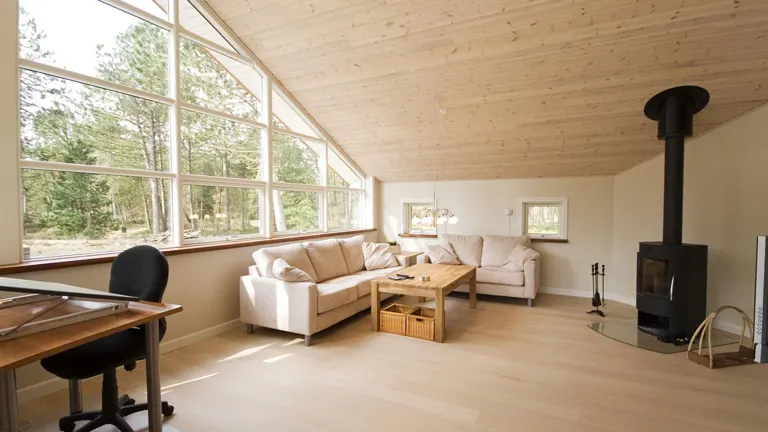
Key Elements of Wood Stove Ventilation
- Air Intake: This is where the oxygen needed for combustion enters the system. In most wood stoves, this is controlled manually through adjustable air vents. The amount of air entering the stove can significantly affect the burning efficiency and heat output.
- Combustion Chamber: This is where the wood burns. An effective combustion chamber design ensures that the wood burns completely, reducing the emission of harmful gases and maximizing heat output.
- Exhaust System (Chimney or Flue): The chimney or flue is crucial for safely expelling combustion by-products out of the home. The design and condition of the chimney significantly influence the overall efficiency and safety of the wood stove. It must be correctly sized and insulated to maintain the proper draft required for efficient burning.
Different Types of Wood Stoves and Ventilation
- Traditional Wood Stoves: These often have simpler designs and may require more manual control of the air intake. Their efficiency and safety are highly dependent on the user’s ability to manage the fire and ensure adequate ventilation.
- EPA-Certified Wood Stoves: Modern wood stoves are designed with efficiency and environmental impact in mind. These stoves often feature advanced combustion technologies that burn wood more completely and cleanly. They may include features like secondary burn units, where gases are re-burned for increased efficiency. These models often have stricter ventilation requirements to ensure optimal performance and safety.
Importance of Complete Combustion
Complete combustion is vital for two primary reasons: efficiency and safety. When wood is completely combusted, it releases more heat, meaning more warmth from less fuel. More importantly, complete combustion reduces the emission of harmful gases like carbon monoxide and particulate matter, which are health and environmental hazards.
Key Components of Wood Stove Ventilation Systems
Understanding and maintaining the key components of a wood stove’s ventilation system is vital for the safety, efficiency, and longevity of the stove.
1. Chimney
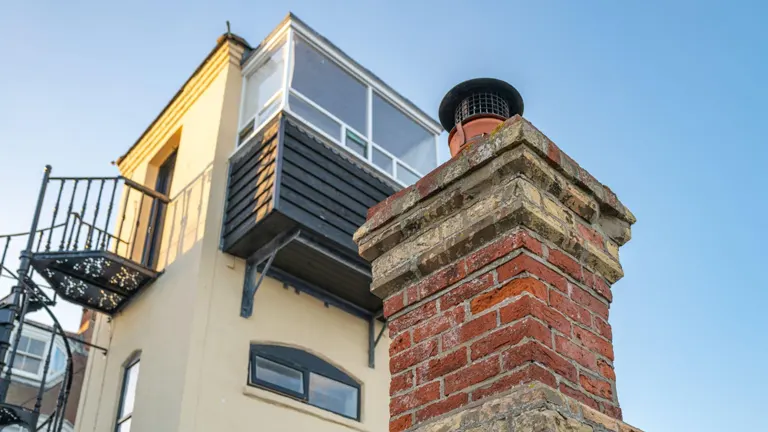
The chimney is essential for safely directing smoke and combustion gases out of the home. Its effectiveness hinges on several specifics:
- Size and Height: The chimney’s diameter should ideally match the stove’s outlet size. For height, a minimum of 10 to 15 feet is often recommended to create an adequate draft, though specific requirements can vary based on the stove model and local building codes.
- Material and Insulation: Chimneys made of materials like stainless steel or lined with heat-resistant tiles can better withstand high temperatures and prevent heat loss, ensuring a consistent draft.
2. Flue Liners
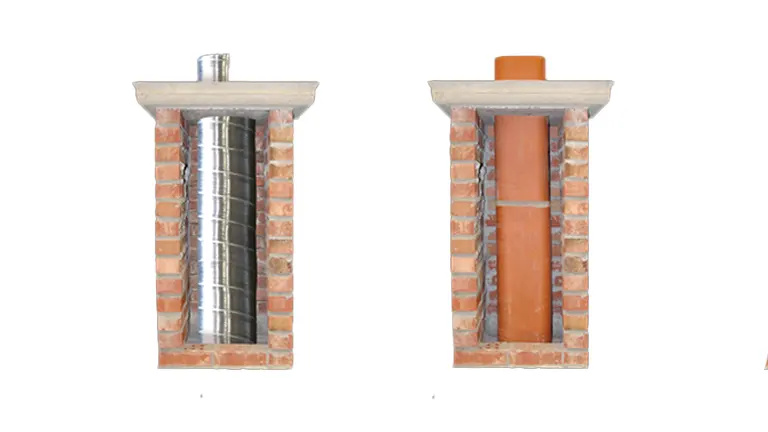
Flue liners protect the chimney’s structure, providing a heat and corrosion-resistant barrier.
- Stainless Steel: Known for its durability and corrosion resistance, stainless steel is ideal for long-term use.
- Clay or Ceramic: These traditional materials offer good insulation but may require more frequent checks for cracks or deterioration.
3. Dampers

Dampers allow you to control the airflow and the fire’s intensity in the wood stove.
- Regulating Airflow: Properly adjusted dampers can significantly influence the stove’s burn rate and heat output.
- Controlling Smoke and Gases: Ensuring that dampers are functioning correctly is key to preventing smoke from entering living spaces.
Regular Maintenance
Maintaining these components is essential for the system’s overall function:
- Annual Inspections: A professional should inspect the chimney, flue liner, and damper at least once a year. This inspection is crucial for identifying any issues that could affect performance or safety.
- Cleaning: The chimney should be cleaned at least once a year, or more frequently if used heavily. This includes removing soot, creosote (which should not exceed 1/4 inch thickness), and any obstructions to prevent chimney fires and ensure efficient airflow.
Optimizing Airflow for Efficient Burning
Managing the air intake is essential for efficient burning. Most modern stoves have adjustable air vents that allow you to control the amount of air feeding the fire. External air supplies can be especially beneficial in tightly sealed homes, as they draw air directly from outside for combustion, helping to maintain good air quality indoors.
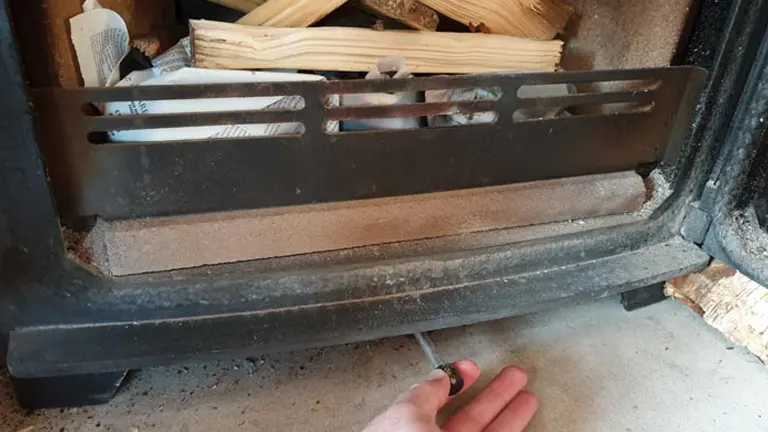
Ensuring complete combustion is key to reducing smoke and increasing efficiency. This can be achieved by maintaining a good balance between the fuel and air supply.
Addressing Common Ventilation Problems
- Smoke Backdrafts: Often caused by poor ventilation or pressure differences in the home. Ensure that the stove and chimney are clean, and consider adding a chimney cap to prevent downdrafts.
- Poor Draft: This can be due to a blocked or overly long chimney, or issues with the damper. Regular cleaning can prevent blockages, and a professional can advise if structural changes are needed.
- Chimney Blockages: Birds’ nests, leaves, and soot can block chimneys. Annual inspections and cleanings are crucial to prevent these issues.
Safety Considerations and Compliance with Regulations
When it comes to wood stoves, prioritizing safety is essential. One significant hazard is the production of carbon monoxide (CO), a colorless and odorless gas that can be deadly. Installing and regularly testing carbon monoxide detectors in your home, especially near sleeping areas, is critical for early detection of this gas. Additionally, adherence to local building codes and standards is essential for safe wood stove installation and ventilation. These regulations often outline specific requirements for stove placement, chimney specifications, and necessary clearances from combustibles.
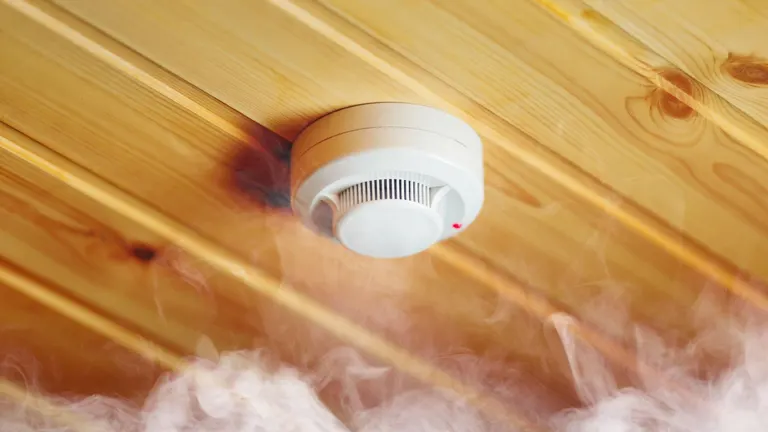
It’s also important to select wood stoves that meet recognized safety certifications, such as those set by the Environmental Protection Agency (EPA) in the U.S., which ensure more efficient and cleaner burning. Proper installation by qualified professionals, in line with the manufacturer’s guidelines, is crucial to ensure the stove operates safely and efficiently. Regular maintenance, including annual inspections and cleaning, plays a vital role in preventing fire hazards and ensuring the safe operation of the stove. This includes maintaining proper clearance from combustibles, having a readily accessible fire extinguisher, and safely disposing of ashes in a metal container with a tight-fitting lid, stored away from the house. By understanding these safety considerations and rigorously following regulations and maintenance practices, you can enjoy the benefits of your wood stove while minimizing the risks to your home and family.
Environmental Impact and Energy Efficiency
Proper ventilation directly impacts the environmental friendliness of your wood stove. Efficient burning means less smoke and fewer particulates released into the atmosphere. EPA-certified wood stoves are designed to burn cleaner and more efficiently, making them a more environmentally friendly choice.
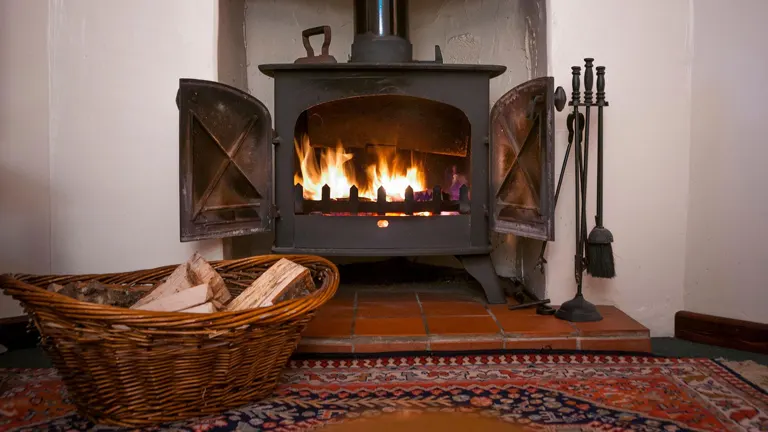
Balancing ventilation with home heating needs can also improve energy efficiency. A well-ventilated stove will provide more effective heating, reducing the need for additional energy sources.
For those in search of the top EPA-Certified Wood Stoves, you’ll find exactly what you need right here! Best EPA Certified Wood Stoves 2023
Conclusion
Ensuring proper ventilation and airflow in your wood stove is not just a matter of efficiency; it’s a matter of safety and environmental responsibility. While this guide provides a comprehensive overview, consulting with a professional for installation and maintenance is always recommended. With the right care and attention, your wood stove can provide a cozy, efficient, and safe heating solution for your home.
We hope this article has been informative and helpful. Your thoughts and experiences are valuable to us and to other readers. Please feel free to comment and share your tips or questions about wood stove ventilation and airflow. Your input can help foster a community of informed and safety-conscious wood stove users. Thank you for taking the time to read this article. We look forward to hearing from you and encourage you to share this information with others who might find it useful.
Related Articles:
- How to Get Wood Stove Heat to Other Rooms: A Comprehensive Guide
- How to Choose the Best Wood Stove Pipe
- Wood Stove Floor Protector: Everything You Need to Know
- 3-Sided Glass Wood Burning Stoves
- Best Products To Clean Wood Stove Glass 2023
- Wood Stove Safety: Tips for a Secure and Cozy Winter
- Wood Stove Fire Bricks Guide: Efficiency & Safety Tips
FAQs
- Can the altitude of my home affect my wood stove’s ventilation?
Yes, altitude can impact the draft in your chimney. At higher altitudes, the air is thinner, which can reduce the natural draft in your chimney, potentially requiring adjustments to your ventilation system. - How does outdoor temperature influence my wood stove’s airflow?
Colder outdoor temperatures generally improve chimney draft since the temperature difference between the inside and outside air increases, creating a stronger upward pull of air. Conversely, mild temperatures might result in a weaker draft. - Can I use a fan to improve my wood stove’s airflow?
While fans can help distribute heat from a wood stove throughout your home, they do not directly affect the stove’s airflow or ventilation. However, properly placed fans can enhance overall heating efficiency. - Is it possible to have too much ventilation in my wood stove system?
Yes, excessive ventilation can lead to over-firing of the stove, which can damage the stove and chimney, increase fuel consumption, and create unsafe operating conditions. - How does the type of wood I burn affect ventilation needs?
The moisture content and type of wood significantly impact ventilation efficiency. Wet or green wood can lead to poor combustion and increased creosote buildup, requiring more frequent chimney cleaning and inspections. - Can the layout of my home affect wood stove ventilation?
Yes, the layout, especially in tightly sealed or multi-story homes, can affect air pressure and flow patterns, potentially impacting stove ventilation and the risk of backdrafts. - What are the signs that my wood stove’s ventilation is inadequate?
Symptoms of inadequate ventilation include difficulty in starting or maintaining a fire, smoke spillage into the room, and a noticeable decrease in heat output. These issues often signal blockages, poor drafts, or other ventilation problems. - Do different chimney materials impact the efficiency of ventilation?
Yes, chimney materials like stainless steel, brick, or clay each have different properties affecting heat insulation and draft efficiency. The choice of material can influence the overall performance of your wood stove’s ventilation system. - Can room air purifiers affect my wood stove’s airflow?
Air purifiers do not typically have a significant impact on a wood stove’s airflow or chimney draft. However, they can improve indoor air quality by filtering out particulate matter from the stove’s emissions. - How does my home’s insulation affect wood stove ventilation?
High levels of insulation can make a home more airtight, potentially reducing the natural airflow required for effective stove operation. In such cases, additional ventilation solutions, like an external air intake, might be necessary.

David Murray
Forestry AuthorI'm David Murry, a forestry equipment specialist with a focus on chainsaw operation. With over 13 years of experience, I've honed my skills in operating and maintaining a wide range of machinery, from chainsaws to log splitters. My passion for the outdoors and commitment to sustainable forestry drive my work, which emphasizes safety, efficiency, and staying updated with industry advancements. Additionally, I'm dedicated to sharing my expertise and promoting environmental awareness within the forestry community.

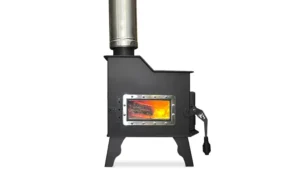
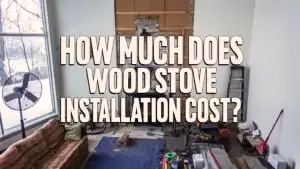
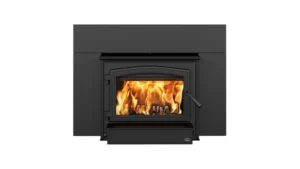


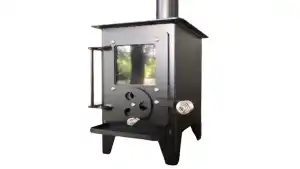
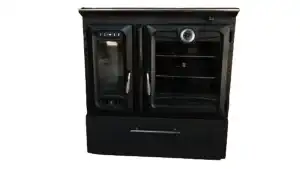
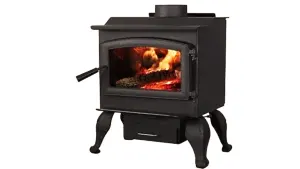


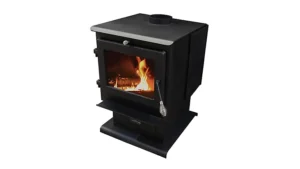
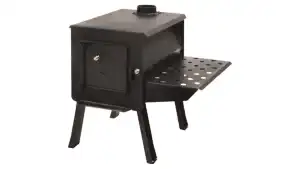
Leave your comment